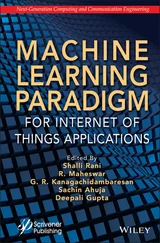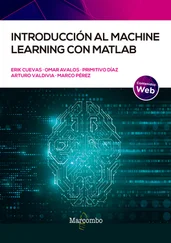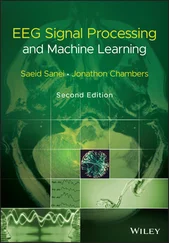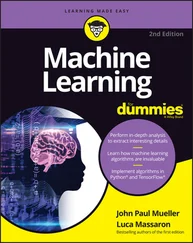14 Chapter 17Table 17.1 Sample covid-19 patient details with different age group.
15 Chapter 18Table 18.1 Related work table.
16 Chapter 19Table 19.1 COVID-19 Dataset Sample.Table 19.2 Sample of risk wise performance comparison of actual vs predicted inf...Table 19.3 Sample of Rule Base Generation from Decision Tree.Table 19.4 Classification of Countries based on Decision Tree Rule Generation.Table 19.5 Cluster Groups of k-means Clustering Algorithm.Table 19.6 Classification accuracy of proposed algorithms.Table 19.7 Sample of classification of countries based on output variables.Table 19.8 Risk measurement of output variables.Table 19.9 Sample of classification of countries based on risk measurement.
17 Chapter 20Table 20.1 Values of k mand k v.
18 Chapter 21Table 21.1 Performance measures of different wavelet by Modified-Random Forest c...Table 21.2 Accuracy comparison with db4 feature extraction using modified RF alg...Table 21.3 Comparison of accuracy of db4 feature extraction with different class...Table 21.4 Comparison of accuracy of MFCC feature extraction with different clas...
19 Chapter 22Table 22.1 Quantitative analysis of the proposed model and the benchmark model.Table 22.2 Number of trainable parameters in the benchmark and the proposed mode...
20 Chapter 23Table 23.1 Statistical texture features.Table 23.2 Number of features in each combination of feature vectors used.Table 23.3 Average recall for the variants of feature sets.Table 23.4 Average precision for the variants of feature sets.Table 23.5 Average accuracy for the variants of feature sets.Table 23.6 Confusion matrix for the four classes using SVM.Table 23.7 SCC detection performance for SVM.
21 Chapter 24Table 24.1 Grade features decision [11].Table 24.2 Accuracy comparison of various classifiers by using different paramet...Table 24.3 Performance measures of different classifiers in terms of TPR, TNR, a...Table 24.4 Results of accuracy, precision, and recall from two different dataset...Table 24.5 Performance of the individual field-specific DCNNs in terms of AUC.
1 Chapter 1 Figure 1.1 Categorization of healthcare fraud.
2 Chapter 2 Figure 2.1 Architecture of the model. Figure 2.2 Screenshots of the web application. Figure 2.3 Accuracy: Model-I vs Model-II. Figure 2.4 Precision: Model-I vs Model-II. Figure 2.5 Recall: Model-I vs Model-II. Figure 2.6 Recall: Model-I vs Model-II.
3 Chapter 3 Figure 3.1 Brain map structure and Equipment used. Figure 3.2 Workflow diagram. Figure 3.3 DWT schematic. Figure 3.4 Images used for visual evaluation. Figure 3.5 Sample of EEG signal for a product with corresponding Brain map and c... Figure 3.6 Accuracy for all users (compiled). Figure 3.7 Individual result of each algorithm. Figure 3.8 Result of 25-users with different algorithms. Figure 3.9 Result of 25-users compared with different algorithms. Figure 3.10 Approximate brain EEG map for dislike state. Figure 3.11 Approximate brain EEG map for like state.
4 Chapter 4 Figure 4.1 Classification of clinical DSS. Figure 4.2 Architecture of CDSS [29].Figure 4.3 Inference using decision tree for the proposed system.Figure 4.4 (a) First level UI of the system in ES-Builder.Figure 4.4 (b) Second level UI of the system in ES-Builder.Figure 4.4 (c) Third level UI of the system in ES-Builder.Figure 4.4 (d) Fourth level UI of the system in ES-Builder.Figure 4.4 (e) Fifh level UI of the system in ES-Builder.Figure 4.4 (f) Sixth level UI of the system in ES-Builder.Figure 4.4 (g) Conclusion level UI of the system in ES-Builder.
5 Chapter 5Figure 5.1 Graphs: (a) Euclidean graph, (b) Non-euclidean graph.Figure 5.2 Representation of DSN.Figure 5.3 Training steps of the model.Figure 5.4 Training Performance: (a) Loss, (b) Accuracy.Figure 5.5 Performance comparison: (a) Accuracy, (b) Precision, (c) Recall, (d) ...
6 Chapter 7Figure 7.1 Sample association between URI, RDF and SPARQL.Figure 7.2 SKCE Multi agent system flowchart.Figure 7.3 Semantic translation framework for healthcare instance data.Figure 7.4 Sample data dictionary with meta classes, concepts and concept values...Figure 7.5 Concept level mappings between different data dictionary elements.Figure 7.6 Sample RDF model of concept level mapping between different data mode...
7 Chapter 8Figure 8.1 The tDCS montage was 7x5 mm electrodes centred over F3 (connector at ...Figure 8.2 (a) Spectral Decomposition of EEG of Subject 8 which shows bad channe...Figure 8.3 Legendre Spectrum of Subject 8 for Anodal Session.Figure 8.4 ‘Stimuli’ is coded as ‘0’ for subjects given at their first visit to ...Figure 8.5 Relationships between pair of variables, in the form of a 6 × 6 matri...Figure 8.6 (a) While “SESSION” is coded from 1 to 6 for Anodal-Pre, Anodal-DCS, ...Figure 8.7 (a) “Gender” is coded in such a way that ‘0’ denotes a Male and ‘1’ d...
8 Chapter 9Figure 9.1 Human wrist characterization through the microwave setup.Figure 9.2 Transfer characteristics through the simulated wrist for standard siz...Figure 9.3 Simulated transfer characteristic with healthy bone by varying the bo...Figure 9.4 Simulated transfer characteristic with osteopenia bone by varying the...Figure 9.5 Simulated transfer characteristic with osteoporotic bone 1 by varying...Figure 9.6 Simulated transfer characteristic with osteoporotic bone 2 by varying...Figure 9.7 Simulated transfer characteristic with osteoporotic bone 3 by varying...Figure 9.8 Simulated transfer characteristic with osteoporotic bone 4 by varying...Figure 9.9 Confusion matrix for KNN.Figure 9.10 Confusion matrix for decision tree.Figure 9.11 Confusion matrix for random forest.Figure 9.12 Graphical representation of the classification report.
9 Chapter 10Figure 10.1 Industry landscape of AI in healthcare (Courtesy: Emily Kuo [2]).Figure 10.2 Tomra—Tomato sorting and processing machines (Courtesy: Tomra [9]).Figure 10.3 Kankan’s Machine system (Courtesy: KanKan AI [11]).Figure 10.4 Plant disease detection (Courtesy: Bitrefine [12]).Figure 10.5 Lameness of domestic cattle (Courtesy: Shearer et al. [13]).Figure 10.6 Processing steps in sentiment analysis.Figure 10.7 Bi-direction LSTM model for text sequence classification.Figure 10.8 Word embedding representation in vector space (Courtesy: David Rozad...Figure 10.9 BERT input embeddings (Courtesy: Cheney [25]).Figure 10.10 Fine-tuning of pre-trained BERT models.Figure 10.11 BERT layered model with classifier (Courtesy: Chris McCormick and N...
10 Chapter 11Figure 11.1 A snapshot of HAM10000 dataset.Figure 11.2 A high-level view of our classification model.Figure 11.3 Training and validation loss MobileNet.Figure 11.4 Training and validation loss ResNet50.Figure 11.5 Training and validation categorical accuracy MobileNet.Figure 11.6 Training and validation categorical accuracy ResNet50.Figure 11.7 Training and validation top2 accuracy MobileNet.Figure 11.8 Training and validation top2 accuracy ResNet50.Figure 11.9 Training and validation top3 accuracy MobileNet.Figure 11.10 Training and validation top3 accuracy ResNet50.Figure 11.11 Confusion matrix MobileNet.Figure 11.12 Confusion matrix ResNet50.Figure 11.13 Classification reports MobileNet.Figure 11.14 Classification reports ResNet50.Figure 11.15 Last epoch results MobileNet.Figure 11.16 Last epoch results ResNet50.Figure 11.17 Best epoch results MobileNet.Figure 11.18 Best epoch results ResNet50.
11 Chapter 12Figure 12.1 Globally vulnerable areas affected by malaria.Figure 12.2 Block diagram for proposed work.Figure 12.3 Dataset sample images.Figure 12.4 Classes distribution in training set.Figure 12.5 Classes distribution in validation set.Figure 12.6 CNN architecture.Figure 12.7 Accuracy curve.Figure 12.8 Loss curve.Figure 12.9 Normalized confusion matrix.
12 Chapter 13Figure 13.1 Sample input images of lung diseases.Figure 13.2 Histogram representation of the dataset.Figure 13.3 Output of augmentation process.Figure 13.4 Lung disease prediction model.Figure 13.5 The proposed layer construction.Figure 13.6 Calculation of model parameters.Figure 13.7 Training history of first round.Figure 13.8 ROC curve of first round.Figure 13.9 Training history of final round.Figure 13.10 ROC curve of second round.Figure 13.11 (a), (b), (c), (d), (e), (f), (g), (h) Prediction results—Lung dise...
Читать дальше












